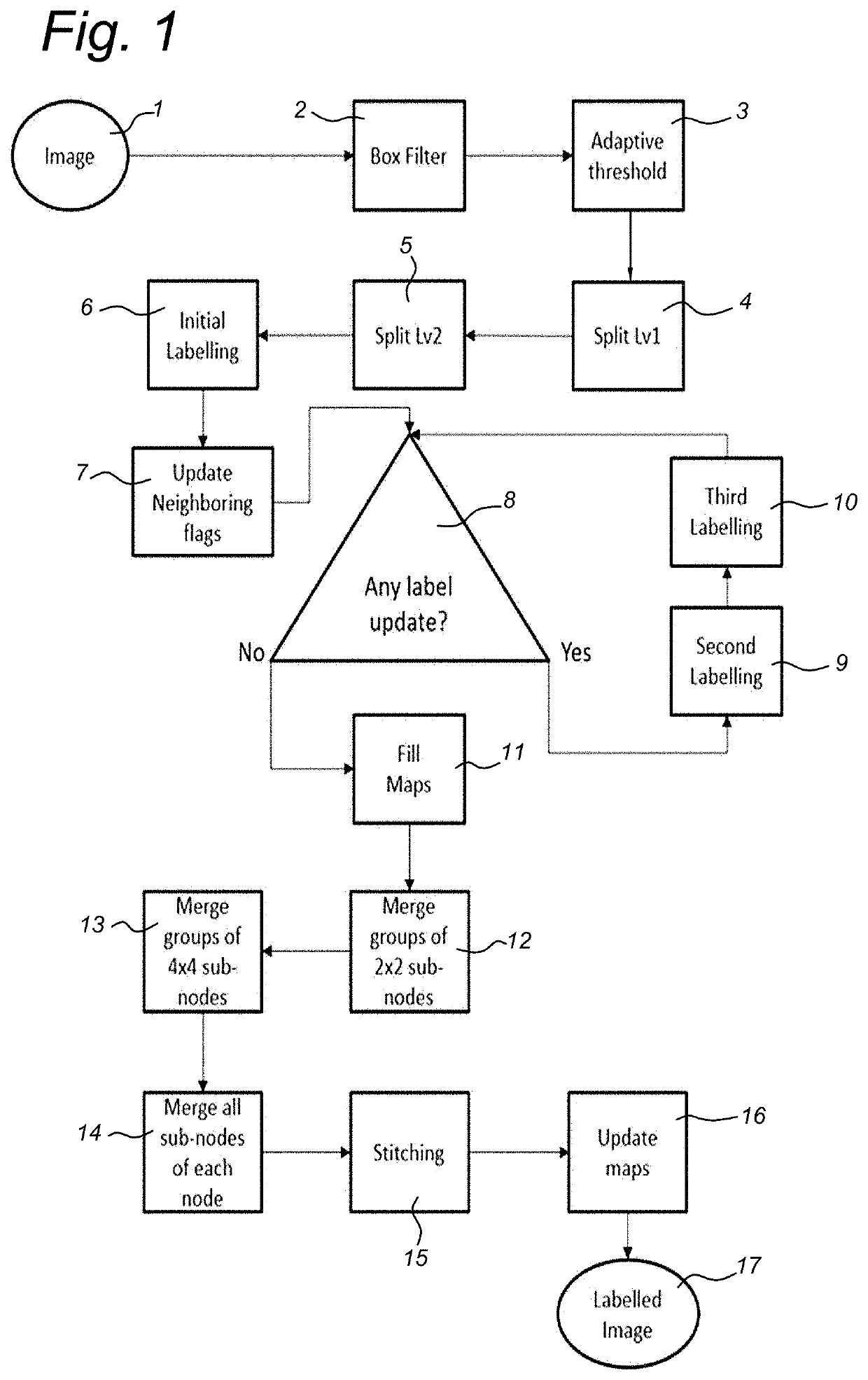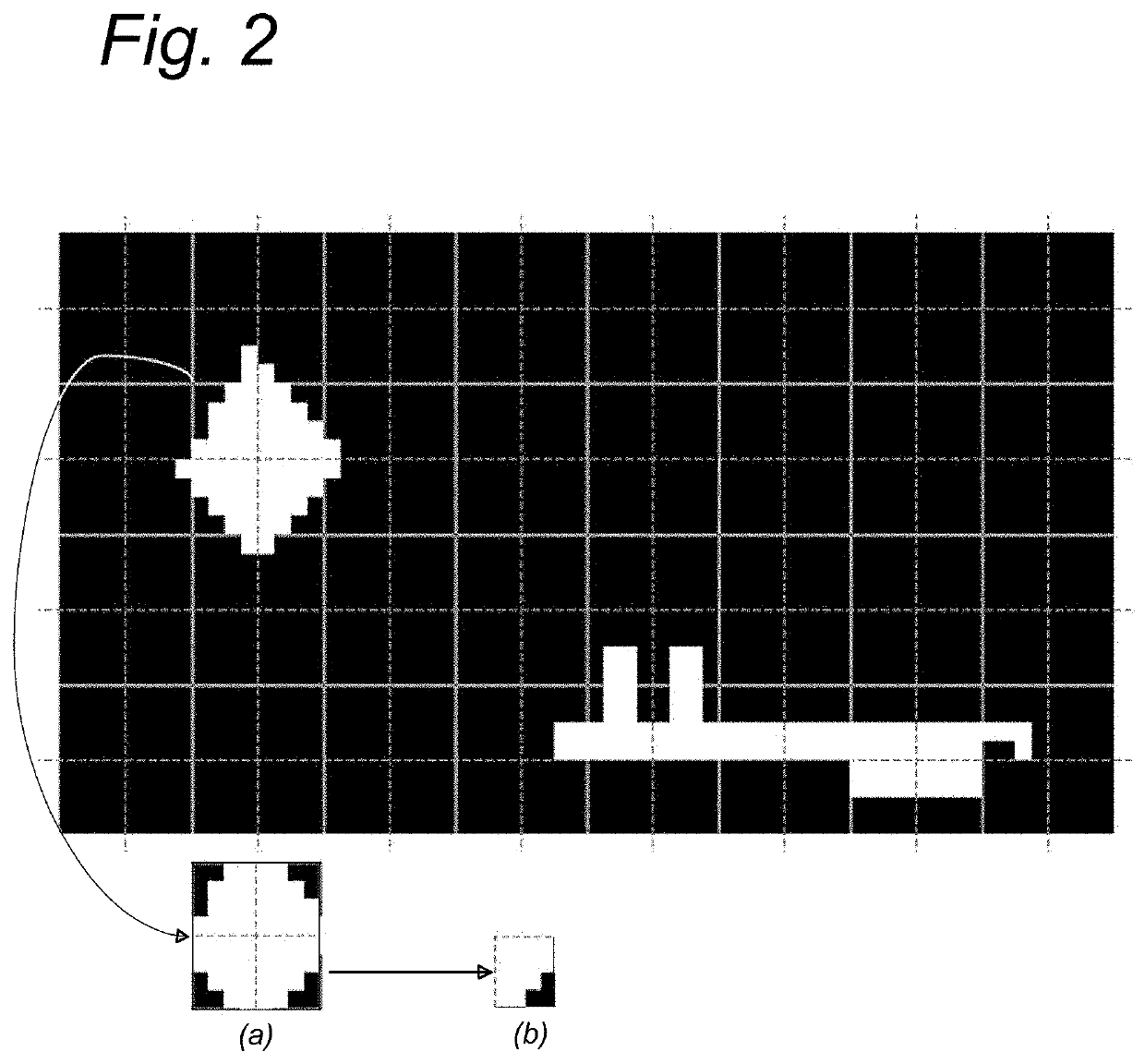Method of and apparatus for analyzing images
a technology of image and apparatus, applied in the field of methods and apparatus for analyzing images, to achieve the effect of preventing memory conflicts and reducing safety distan
- Summary
- Abstract
- Description
- Claims
- Application Information
AI Technical Summary
Benefits of technology
Problems solved by technology
Method used
Image
Examples
Embodiment Construction
[0054]The present invention provides a method and a device for analyzing an image for pattern identification. The invention also relates further to a method of and apparatus for performing tracking or positioning of an object based on a pattern in an image which pattern is fixed to that object. The invention also relates to a method of and an apparatus for allowing autonomous rendezvous and docking of two objects like two spacecrafts where one of the objects has a pattern fixed to it.
[0055]The pattern is a dot pattern like the ones shown FIGS. 10, 12 and 13. The patterns used have specific features as will be explained hereinafter. In general, an image of the dot pattern will be made by a camera having a suitable image sensor, e.g., a 2D sensor array. The image signal as generated by this sensor is output to a suitable processing system which processes the image signal in a way as defined hereinafter. A general setup of examples of such a camera with processing system is shown in an...
PUM
 Login to View More
Login to View More Abstract
Description
Claims
Application Information
 Login to View More
Login to View More - R&D
- Intellectual Property
- Life Sciences
- Materials
- Tech Scout
- Unparalleled Data Quality
- Higher Quality Content
- 60% Fewer Hallucinations
Browse by: Latest US Patents, China's latest patents, Technical Efficacy Thesaurus, Application Domain, Technology Topic, Popular Technical Reports.
© 2025 PatSnap. All rights reserved.Legal|Privacy policy|Modern Slavery Act Transparency Statement|Sitemap|About US| Contact US: help@patsnap.com



